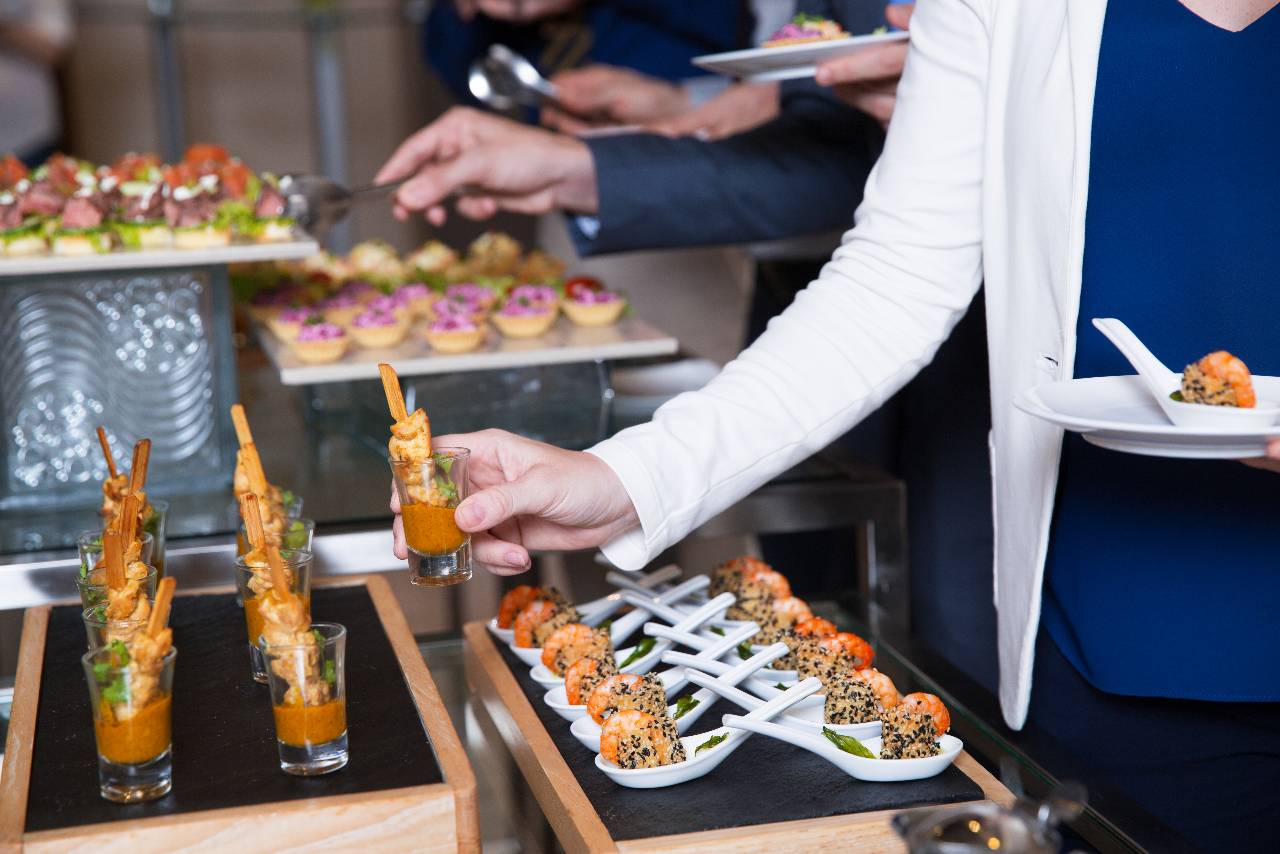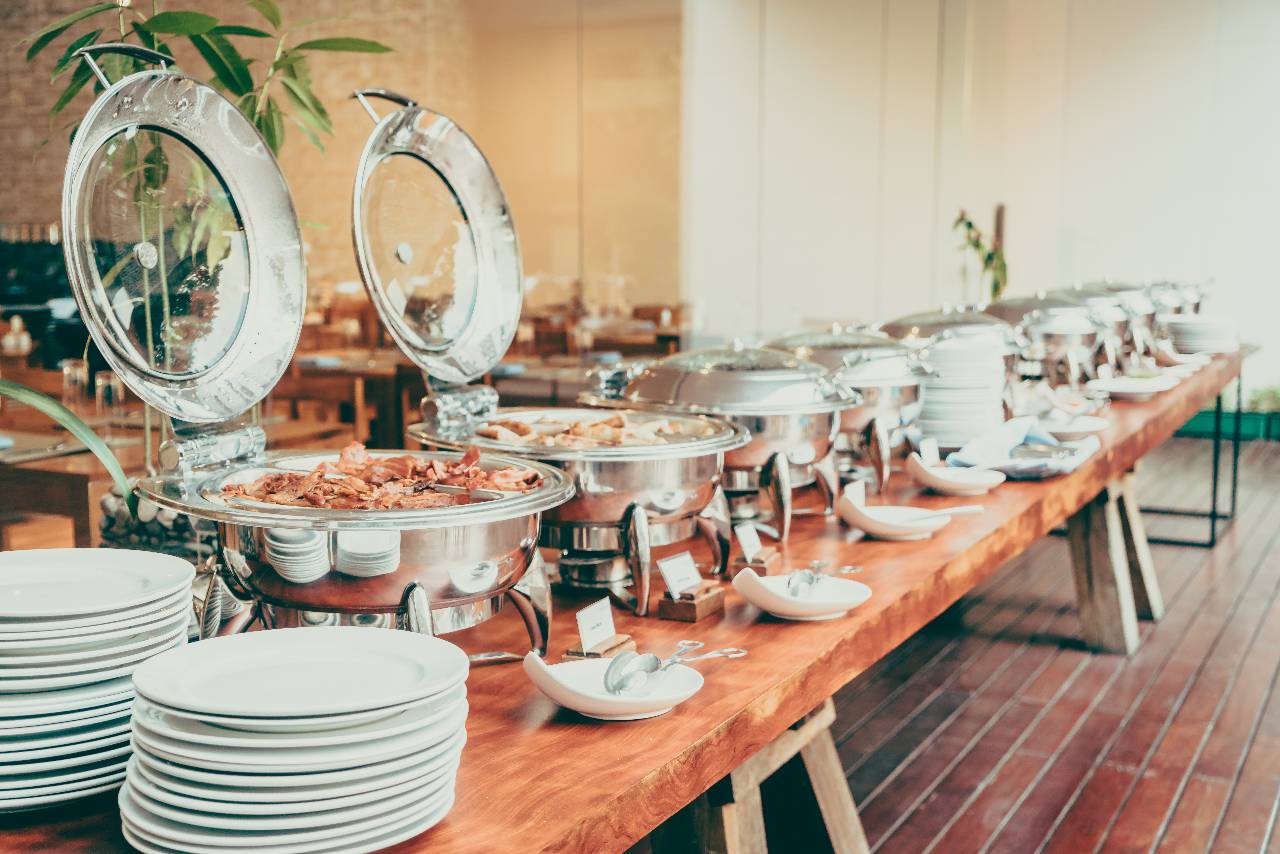How to Start a Catering Business
Start your catering business confidently with this roadmap covering legal setup, menu pricing, equipment essentials, marketing, and client-building strategies.

Overview
Starting a catering business can be one of the most rewarding paths for anyone who loves food, creativity, and hospitality. In 2025, the catering industry continues to thrive - driven by weddings, corporate gatherings, and private events returning in full force. According to recent market research, the global catering market is projected to surpass $100 billion this year, showing strong demand for fresh and personalized food experiences.
What makes catering especially appealing is its flexibility. You can start small, working from a shared kitchen or even your home (where regulations allow), and expand as your client list grows. Unlike a restaurant, you don't need a permanent storefront or large staff to begin. Success depends more on smart planning, organization, and consistent service than on years of experience.

Define Your Niche and Services
Before diving into menus or marketing, the first step in starting your catering business is identifying your niche - the specific type of catering you'll focus on. Your niche determines everything from the food you serve to the equipment you buy and the clients you attract. Choosing a focus also helps you stand out in a crowded market, especially when you're just starting out.
There are several popular types of catering businesses - wedding catering, corporate catering, private party catering, meal prep services, and specialty or themed catering (like vegan, barbecue, or ethnic cuisines). Each one comes with its own set of challenges and opportunities. For example, wedding caterers must focus on presentation and event coordination, while corporate caterers prioritize punctuality and packaging efficiency.
To find your niche, ask yourself a few key questions -
- What kind of events do I enjoy or have experience with?
- What foods do I make best, and which ones scale well for large orders?
- Who are the main customers in my local area - businesses, families, or event planners?
It's better to start small and specialize than to try serving everyone. For instance, focusing on "healthy corporate lunches" or "intimate backyard events" makes it easier to build a clear brand message and consistent operations.
Once your niche is set, define your service style - buffet, plated service, family-style, or drop-off. Each option affects your staffing, pricing, and logistics. The clearer your niche and service offering, the easier it becomes to plan your menu, market your business, and deliver exceptional results from day one.
Create a Business Plan That Works for a Small Caterer
A well-thought-out business plan is the foundation of your catering business. It doesn't need to be complicated or filled with jargon - it just needs to clearly outline your goals, costs, and path to profitability. Think of it as your personal road-map, helping you stay focused and organized as you move from idea to execution.
Start by writing a short mission statement - what kind of catering you'll offer and who you'll serve. For example, We provide affordable, high-quality catering for small business events and family gatherings. Next, identify your target market. Are you focusing on corporate lunches, weddings, or community events? Knowing this helps you tailor your menu, marketing, and pricing.
Your business plan should also include a startup budget. List everything you'll need to launch - licenses, kitchen rental, equipment, ingredients, packaging, and marketing. Estimate your monthly expenses such as utilities, labor, and delivery costs. Then, project your expected income based on how many events you can realistically handle per month. Even a simple Excel or Google Sheet can help you track these numbers.
Don't forget your pricing strategy. Many new caterers underprice their services, but your plan should include a clear formula that covers food cost, labor, overhead, and a healthy profit margin (typically 10-15%).
Finally, include an action plan - a list of short-term and long-term goals. For example-
- First 30 days - Get permits, build menu, secure kitchen space
- Next 90 days - Book first three clients and launch website
With a clear business plan, you'll have both direction and confidence as you begin your catering journey.
Register Your Business and Get the Right Permits
Once your plan is in place, it's time to make your catering business official. This step might not be as exciting as menu creation, but it's one of the most important. Getting properly registered and licensed protects you legally, helps build trust with clients, and ensures you can operate without interruption.
Start by choosing your business structure. Most small caterers register as a sole proprietorship, LLC (Limited Liability Company), or corporation. An LLC is often the best balance for new caterers - it separates personal and business liability while keeping taxes simple. Register your business name with your local authorities and check that it's unique before printing menus or logos.
Next, apply for the required licenses and permits. These typically include -
- Food handler certification (for you and your staff)
- Health department permit to prepare and serve food
- Business license from your city or county
- Sales tax permit if you're collecting tax on food sales
- Liability insurance, which covers accidents or damages at events
Check your local health department website for specific rules - some states require inspections of your kitchen before you can start serving food. If you're using a home kitchen, regulations may differ, and in many areas, you'll need to use a commercial or shared kitchen to stay compliant.
Finally, keep digital copies of all licenses and insurance certificates. Clients often ask for proof of certification before booking, and having everything organized makes you look more professional. Getting legal and regulatory tasks done early saves you time, money, and stress down the road - so you can focus on what you love most- creating amazing food and memorable events.

Build a Starter Menu and Price It Right
Your menu is the heart of your catering business - it defines your brand, shapes your costs, and determines your profit. The key is to start small and smart. A focused menu with a few reliable dishes is easier to manage, reduces waste, and helps you deliver consistent quality every time.
Begin by designing a starter menu that fits your chosen niche. If you're focusing on corporate lunches, think of dishes that travel well and hold temperature, such as pastas, roasted vegetables, or grain bowls. For weddings or formal events, prioritize presentation and variety - include one or two protein options, a vegetarian dish, sides, and desserts. Avoid overly complex recipes in the beginning; simplicity keeps operations smooth and costs predictable.
Next, learn to calculate food cost percentage - a key metric in catering profitability. The formula is simple-
(Cost of ingredients / Selling price) x 100 = Food cost %
A healthy target is usually 25-35%. This ensures you're covering ingredients, labor, packaging, and overhead while maintaining profit.
For example - if a chicken entree costs $4.50 in ingredients and you sell it for $15, your food cost is 30%. From there, build in your labor and overhead costs, then add a profit margin of 10-15%.
Also, think about portion control and packaging - two often overlooked factors that affect your bottom line. Clear portion sizes prevent over-serving, while professional packaging enhances your brand image.
Lastly, update your menu seasonally to stay fresh and take advantage of local, affordable ingredients. A well-priced, well-balanced starter menu will help you win clients' trust and set the stage for scaling up later.
Set Up Your Kitchen and Equipment
Setting up your kitchen is one of the biggest investments when starting a catering business, but it doesn't have to break the bank. The goal is to create a functional space that meets safety standards and supports your menu - without buying unnecessary equipment upfront.
First, decide where you'll prepare your food. Many new caterers start in a commercial kitchen or shared commissary, which you can rent by the hour or day. These kitchens are already inspected and approved by health departments, saving you the cost of building your own facility. If local regulations allow home-based catering, make sure your kitchen meets all food safety and zoning requirements before launching.
Next, focus on essential equipment only. Your starter list should include -
- Prep tables and cutting boards
- Commercial-grade pots, pans, and utensils
- Chafing dishes and food warmers
- Insulated transport containers
- Food storage bins and labeling supplies
- Refrigeration and freezers
-Cleaning and sanitation tools
You can find affordable options through equipment resellers, restaurant auctions, or lease-to-own programs. Buying used but well-maintained equipment is a smart way to stretch your startup budget.
Don't overlook food safety tools such as thermometers, gloves, and sanitizing solutions - health inspectors will check for these. Organize your workspace efficiently to avoid cross-contamination and make food prep faster.
Lastly, invest in transportation logistics. Reliable food carriers, carts, and a vehicle large enough for deliveries are just as crucial as your kitchen setup. A well-equipped, compliant kitchen not only boosts efficiency but also builds confidence in clients who value professionalism and safety in every order.
Marketing and Networking
With your menu ready and kitchen set up, the next challenge is finding your first clients. Effective marketing for a catering business doesn't always require a big budget - it requires visibility, consistency, and strong relationships. The goal is to get your name out there and build trust within your community.
Start with your online presence. Create a simple website or landing page showcasing your menu, pricing samples, photos of your dishes, and contact information. Make sure your business is listed on Google My Business, Yelp, and local event directories. These platforms make it easy for potential clients to find you when searching for caterers near me.
Social media is another powerful (and free) tool. Post photos and short videos of your food, setup, and behind-the-scenes preparation. Platforms like Instagram, Facebook, and TikTok can help you connect directly with event planners, small businesses, and newly engaged couples looking for caterers. Use local hashtags and encourage clients to tag your business in their event posts.
Beyond digital marketing, networking plays a major role in catering success. Reach out to event planners, florists, venues, and photographers - people who can refer you to clients. Offer to cater small community events or fundraisers to build word-of-mouth momentum.
Don't forget to track your marketing results. Keep a simple spreadsheet of inquiries, booked events, and referral sources. Over time, you'll see which channels bring the most business.
Finally, build loyalty by delivering great experiences - on-time service, delicious food, and clear communication. In catering, one satisfied customer often leads to five more. Your reputation is your most powerful marketing tool.
Startup Checklist - Your First 30 Days in Business
Your first month as a catering business owner sets the tone for everything that follows. This is when you move from planning to action - turning your ideas into real bookings, clients, and operations. Having a clear checklist keeps you organized and ensures nothing important slips through the cracks.
Here's a practical 30-day road-map to help you launch smoothly -
Week 1. Legal and Administrative Setup
- Register your business name and obtain your business license.
- Apply for all required health permits and food handling certifications.
- Set up a dedicated business bank account and bookkeeping system.
- Purchase business insurance and save copies of all legal documents.
Week 2. Menu and Kitchen Preparation
- Finalize your starter menu and confirm recipes with standard portion sizes.
- Source suppliers for ingredients and packaging.
- Rent or set up your kitchen space and organize storage areas.
- Conduct a small test run - prepare a few dishes to evaluate quality, timing, and presentation.
Week 3. Branding and Marketing Launch
- Create your logo, website, and social media pages.
- Register your business on Google Maps and local event directories.
- Post sample menus, pricing, and professional food photos online.
- Begin networking with event planners, local venues, and nearby businesses.
Week 4. Client Outreach and Soft Launch
- Offer tasting samples or discounts for first-time clients.
- Collect reviews and testimonials from early customers.
- Track all inquiries and bookings in a spreadsheet for follow-up.
- Review your performance - what worked, what didn't, and adjust your plan.
By the end of the first 30 days, your catering business should be legally compliant, operationally ready, and starting to attract clients. Stay consistent, focus on quality, and your reputation will grow faster than you expect.